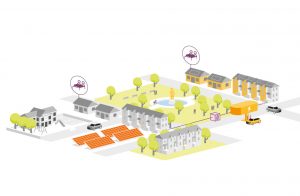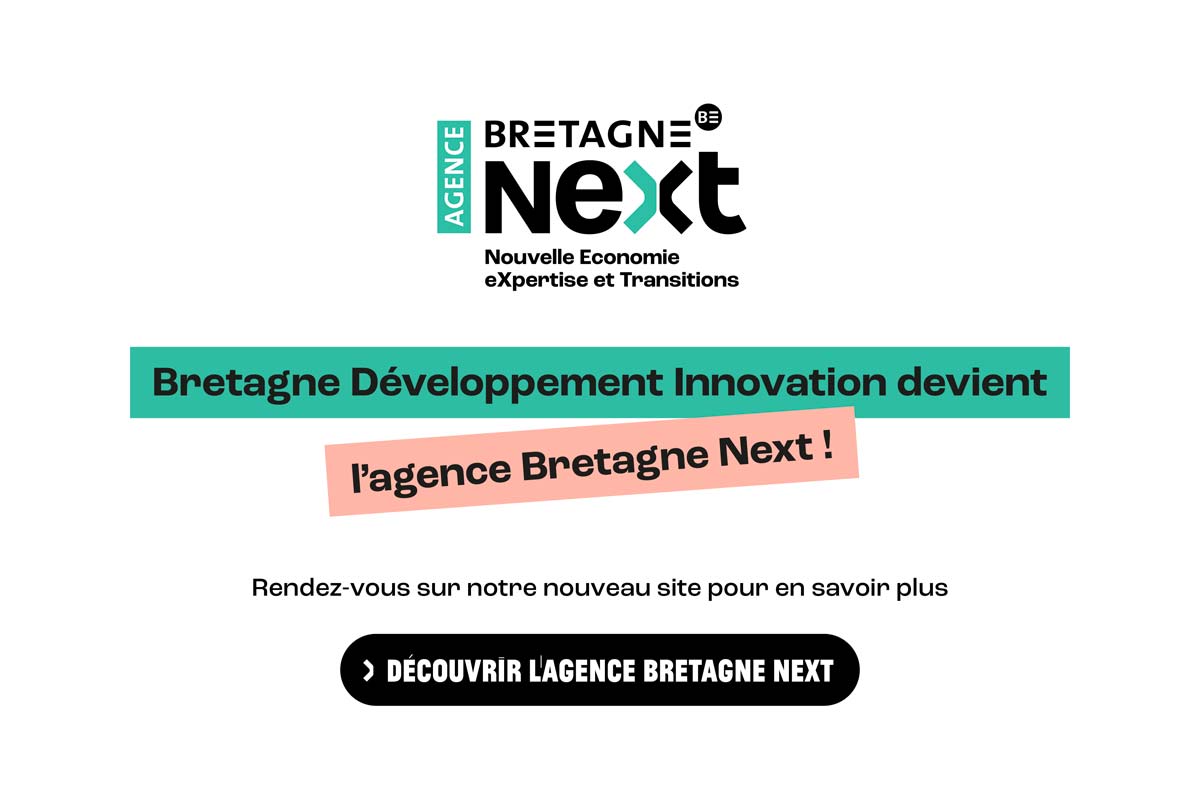The Langouët (35) project, initiated in April 2017, arose from the desire of residents to boost local energy production. Their motivation was materialised by the implementation of a collaborative self-consumption loop for renewable energy in the village. The energy is produced via diverse photovoltaic installations on the rooftops of public and private buildings. The project’s success is built on the commitment of these citizens.

Project objectives and functioning
There are currently two collaborative self-consumption renewable energy loops deployed in Langouët: the first is partly supplied by solar trackers, the second by private production on the rooftops of private houses or on public buildings such as the town hall, the village workshop, the school or the children’s centre. The total installed power is 100 kWc.
The photovoltaic production installations supply 8 residential buildings including a farm, as well as some of the village’s public buildings. They will also power an electric charging terminal opposite the town hall.
The aim of this project is therefore to get the ball rolling in terms of urbanisation, mobility, and the global ecosystem that is so dear to the Langouët residents. The C2C concept “Cradle to Cradle” corresponds fully to this project, as it integrates an ecological requirement whose principal is zero pollution and 100% reuse.
The global village project was selected as part of the ADEME’s call for expressions of interest in urbanism and circular economy and is also under experimentation contract with ENEDIS.
A 75m² tracker already in operation
Since March 2020, the solar tracker has been in operation and has produced energy on the site. This tracker, equipped with 75m² of double-sided solar panels, is a motorised structure which follows the path of the sun throughout the day. The advantage of having solar panels on each side of the tracker is to benefit from the light reflected by the ground. Connected to the local school and the town hall, the tracker supplies these two structures and redistributes any surplus electricity to village residents.
![]()
The Solai Lann Coat association supporting citizens
The success of this project is also conditional on the education of citizens. Composed of energy producers, consumers and benefactors, the association provides the keys to understanding this project for the users. We would also like to underline the huge investment in this project by the local agency for energy and climate (ALEC) advocating the energy transition in Langouët.
The mission of the association’s members:
- Provide a better understanding of energy bills and optimisation of consumption
- Carry out informative actions on how energy works: Production>Network>Consumption
Added value of the project
- Implement photovoltaic production solutions
- Achieve a rate of auto-production of 50%
- Reduce GHGs and the use of fossil fuels
- Understand the real cost of the local energy produced by the installations
- Test the project’s utility in encouraging the global rate of auto-production
- General involvementof all stakeholders (from producer to consumer)
Project sponsors and partners
ENERG’IV: Sponsor and investor in the project, including administration and billing customers
LANGOUET town council: partner
ENEDIS: technical partner
Val d’Ille-Aubigné county council: partner
ENERCOOP BRETAGNE: energy engineer partner
OK WIND: Industrial R&D partner
Rural and Urban Brittany for Sustainable Development (BRUDED): facilitation partner
ALEC Pays de Rennes: development and facilitation partner
BRITTANY REGION: financial partner
ENOGRID: technical partner, data management
SDE 35: financial partner
Support from BDI through the SMILE programme
BDI supported the development of this project through the SMILE programme. The village of Langouët’s project has SMILE certification and is showcased in the SMILE showroom situated 64 bd Voltaire in Rennes and 16 allée des Tanneurs in Nantes (the showroom can be visited by sending a request to the association).
More about the SMILE association
The point of contact for this project for Brittany is Françoise Restif (contact details below)
Key project date and figures
- Start date: 01/04/2017
- Start of service and inauguration of the Solar tracker: 09/03/2020
- Rate of auto-production: 48%
- Rate of self-consumption: 83%

